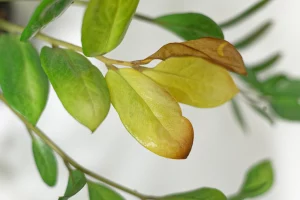Picture this: a warm summer evening, a gentle breeze carrying the sweet fragrance of blooming flowers. Now imagine being able to recreate that ambiance right in your own backyard. If you’ve ever dreamed of having a garden filled with the intoxicating scent of jasmine, then this article is for you. In this guide, we will uncover the secrets to successfully planting and growing jasmine, ensuring that your oasis becomes the envy of every neighbor on the block. Get your gardening gloves ready and prepare to embark on an aromatic journey.
Choosing The Right Location
Choosing the right location for planting jasmine can greatly impact its growth and overall health. While jasmine is a resilient plant that can grow in various climates, it thrives best in warm and sunny areas. When deciding on a spot, consider the amount of sunlight the area receives throughout the day. Jasmine requires at least six hours of direct sunlight to bloom fully.
In addition to sunlight, it’s also crucial to consider soil conditions. Jasmine prefers well-draining soil that is rich in organic matter. Avoid areas with compacted or heavy clay soil, as this can lead to poor drainage and root rot. Prioritize locations with loose and fertile soil, as this will provide a favorable environment for the roots to grow deep and spread out.
Preparing The Soil
Preparing the soil is a crucial step when it comes to planting jasmine. It not only sets the foundation for healthy plant growth but also ensures that your jasmine thrives in the long run.
- One important aspect of soil preparation is to test its pH level. Jasmine prefers slightly acidic soil, with a pH level between 6 and 7. If your soil is too acidic or alkaline, it can negatively impact the plant’s ability to absorb nutrients effectively. To adjust the pH level, you can add organic matter like compost or well-rotted manure.
- Another important factor in preparing soil for jasmine is ensuring proper drainage. Jasmines don’t like sitting in wet and waterlogged soil as it can lead to root rot and other diseases. Therefore, improving drainage by adding sand or vermiculite to heavy clay soils can go a long way in preventing these issues and promoting healthier growth.
- Lastly, consider adding some slow-release organic fertilizer when preparing the soil for jasmine. This can provide essential nutrients gradually over time, allowing for sustained growth and blooming throughout the season. Look for fertilizers with balanced ratios of nitrogen, phosphorus, and potassium (NPK), which are commonly represented as numbers on fertilizer packaging – such as 10-10-10 or 14-14-14.
By taking these steps to prepare your soil before planting jasmine, you set yourself up for success in creating a vibrant and thriving garden filled with enchanting fragrance all summer long! So don’t rush into planting without
Planting The Jasmine
Jasmine is a delicate and fragrant flower that many gardeners love to have in their yards. Planting jasmine can be a rewarding experience, as it not only adds beauty to your space but also fills the air with its mesmerizing scent.
- When planting jasmine, it is important to choose the right location that provides ample sunlight and well-drained soil. While most varieties of jasmine thrive in full sun, some can tolerate partial shade as well.
- Once you have selected the perfect spot for your jasmine plant, it’s time to prepare the soil. Jasmine prefers soil that is slightly acidic and rich in organic matter. To achieve this, add compost or well-rotted manure to the soil before planting. This will not only help improve drainage but also provide essential nutrients for healthy growth.
- When it comes to actually planting the jasmine, make sure to dig a hole that is wide enough for the root ball of your plant. Gently loosen the roots before placing them in the hole and backfill with soil, making sure not to cover the stem or crown of the plant. After planting, water thoroughly and mulch around the base of the plant to retain moisture and suppress weeds.
- As your jasmine grows, remember to provide regular watering during dry periods and prune after flowering to maintain shape and encourage new growth. In addition, adding a slow-release fertilizer once or twice a year can help promote lush foliage and abundant blooms.
Planting jasmine requires patience and care but with proper attention given throughout its growth cycle; your
Watering And Fertilizing
Watering and fertilizing are essential aspects of caring for jasmine plants. When it comes to watering, it’s important to strike the right balance. Overwatering can lead to root rot and other diseases, while underwatering can cause the plants to wilt and die. To determine when jasmine plants need watering, check the soil moisture level by inserting your finger into the soil up to your knuckle. If it feels dry at that depth, it’s time to water.
As for fertilizing, feeding jasmine plants with a balanced fertilizer can help promote healthy growth and abundant blooms. It’s best to use a slow-release fertilizer that provides nutrients gradually over time rather than all at once. This will prevent any potential nutrient burn or excessive growth spurts that may weaken the plant’s structure. Additionally, organic fertilizers are often recommended as they improve soil health and fertility in the long run.
When watering or fertilizing jasmine plants, avoid wetting their leaves as this can increase the risk of fungal infections and pests. Instead, aim for a direct application around the base of the plant using a gentle spray or watering can. Remember that each jasmine variety may have specific watering needs based on its native habitat, so it’s always a good idea to do some research on your particular type of jasmine before starting your care routine.
Pruning And Maintenance
Pruning and maintenance are crucial aspects of growing healthy and vibrant jasmine plants. Regular pruning not only keeps your plant looking well-manicured but also encourages new growth and improved flowering. It is advisable to prune your jasmine during early spring before the new growth starts, as this will help promote a more controlled growth pattern.
When pruning your jasmine, it’s important to remove any dead or damaged branches first. This will not only improve the overall appearance of the plant but also prevent disease from spreading. Additionally, thinning out some of the older woody stems can help stimulate new growth and improve air circulation within the plant.
After pruning, make sure to apply a balanced fertilizer to provide essential nutrients for optimal growth and blooming. Regular maintenance tasks such as watering adequately (avoiding overwatering), monitoring for pests or diseases, and providing support structures if needed should be followed consistently throughout the year as well.
Conclusion:
In conclusion, as we wrap up this guide on how to plant and grow jasmine, it is important to highlight the ultimate reward – the sheer beauty of this incredible flower. Whether you have chosen a fragrant variety like Arabian jasmine or an ornamental type such as pink jasmine, its delicate petals and intoxicating scent will never fail to captivate your senses. Take the time to appreciate the intricate detailing and elegant form of each blossom as it opens up in full bloom, creating a delightful spectacle in your garden.
Moreover, beyond its aesthetic value, jasmine also holds significant cultural symbolism. In many Eastern cultures, it represents purity, love, and good luck. Some even believe that having jasmine plants around can promote tranquility and positive energy in one’s home. So not only will you be basking in its visual charm but also inviting these auspicious qualities into your life by embracing this lovely flower.
As you sit with a cup of tea on your porch or take an evening stroll through your garden filled with fragrant blooms, let yourself fully immerse in the enchanting presence of jasmine. Allow its calming influence to soothe your spirit after a long day’s work or relish its vibrant energy that brings life to any space it graces. Remember that nurturing plants often extends beyond regular care; it involves appreciating their unique attributes and finding joy in their existence. So go ahead – enjoy the beauty of your treasured jasmines and revel in nature’s






Be First to Comment